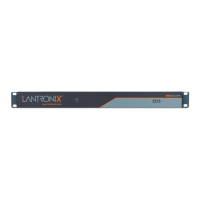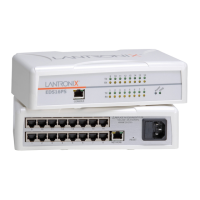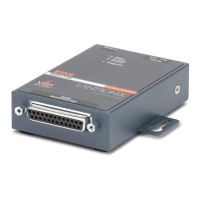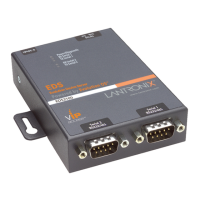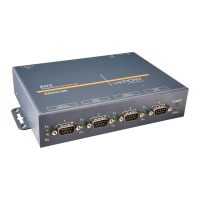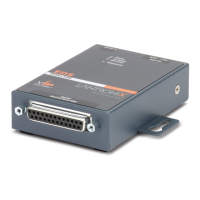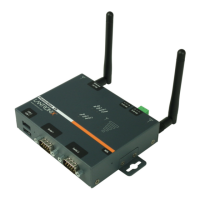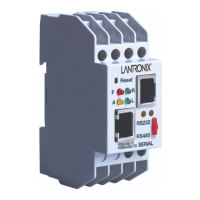 Loading...
Loading...
Do you have a question about the Lantronix EDS32PR and is the answer not in the manual?
| Certification | UL/CUL, FCC, CE, TUV, C-Tick, GS, CB scheme, VCCI FCC Part 15 Statement Class A Device, ICES-003 Class A Device, C-Tick, VCCI, CE Marking, UL-CUL Mark, TUV-GS Mark, RoHS FCC CFR 47 Part 15 Subpart B, ICES-003 Issue 4, AS/NZS CISPR 22, VCCI V-3, EN55022, EN61000-3-2, EN61000-3-3, EN55024, EN61000-4-2, EN61000-4-3, EN61000-4-4, EN61000-4-5, EN61000-4-6, EN61000-4-8, EN61000-4-11 |
|---|---|
| Networking standards | IEEE 802.3 |
| Serial interface type | RS-232 |
| Serial ports quantity | 32 |
| Ethernet LAN data rates | 10, 100 Mbit/s |
| Cabling technology | 10/100Base-T(X) |
| USB 2.0 ports quantity | 0 |
| Ethernet LAN (RJ-45) ports | 1 |
| Security algorithms | SSH |
| Supported network protocols | HTTP, HTTPS, FTP, TFTP, Telnet, TCP, UDP, LPD, XML, DHCP, SSHv2, SSLv3, SNMPv2, AutoIP, RSS, ARP, ICMP, SYSLOG, AES, SMTP, DNS, BOOTP, Traceroute |
| Built-in processor | Intel XScale IXP420 |
| Processor frequency | 266 MHz |
| Compatible operating systems | Windows 98/ME/NT/2000/XP/Vista |
| Flash memory | 8 MB |
| RAM capacity | 64 MB |
| LED indicators | LAN |
| Storage temperature (T-T) | -40 - 70 °C |
| Operating temperature (T-T) | 0 - 50 °C |
| Operating relative humidity (H-H) | 5 - 95 % |
| Input voltage | 100 - 240 V |
| Safety | UL 60950-1, CSA-22.2 No.60950-1-03, EN60950-1, CB Report - IEC 60950-1 |
